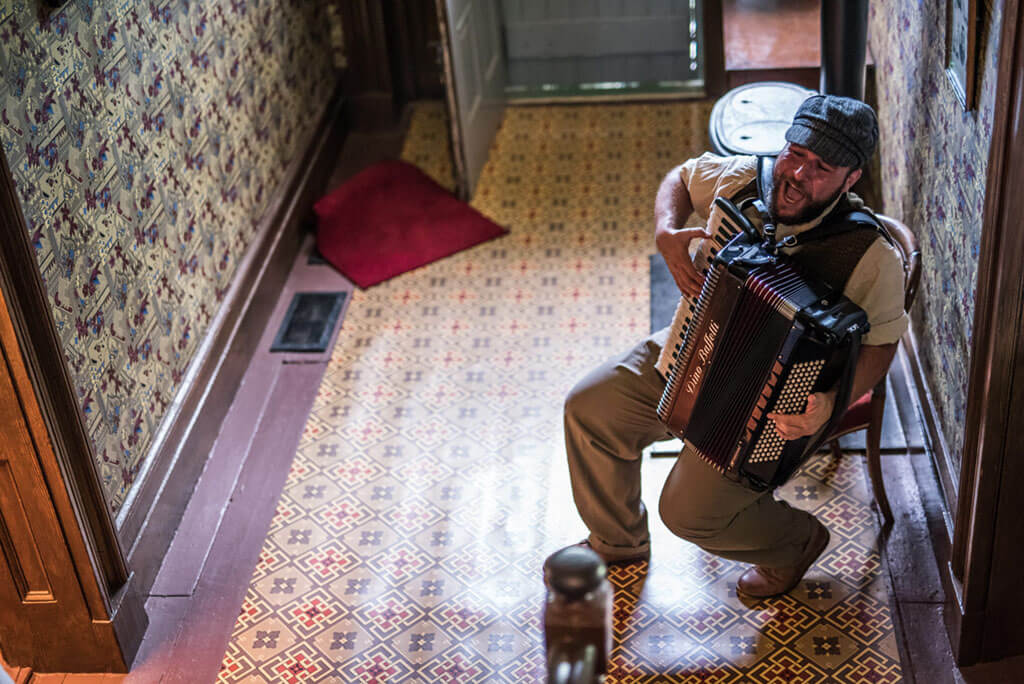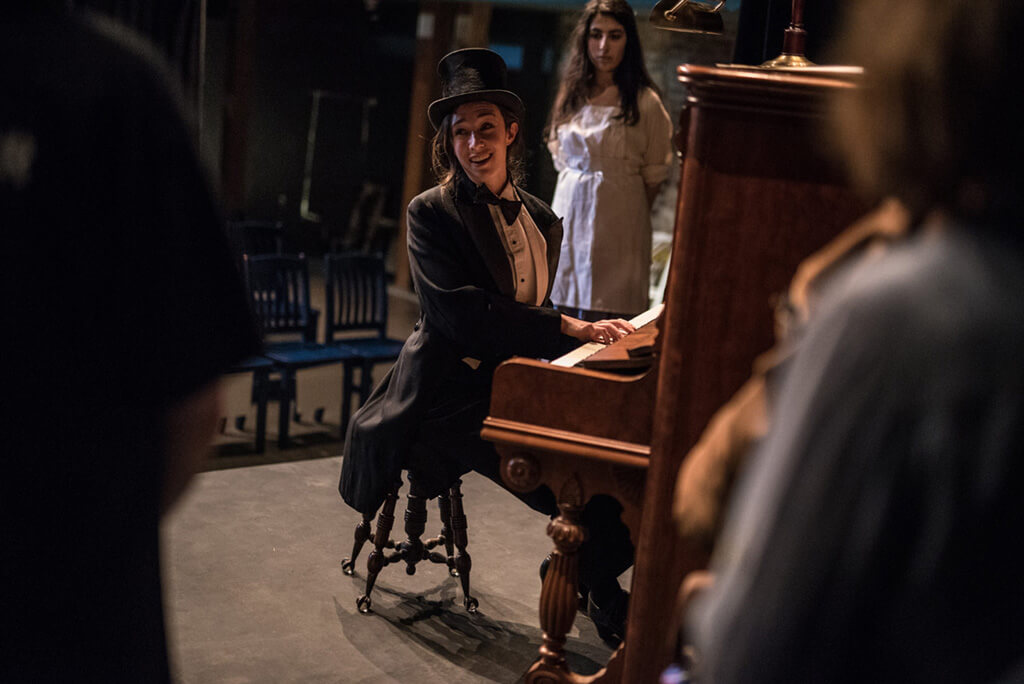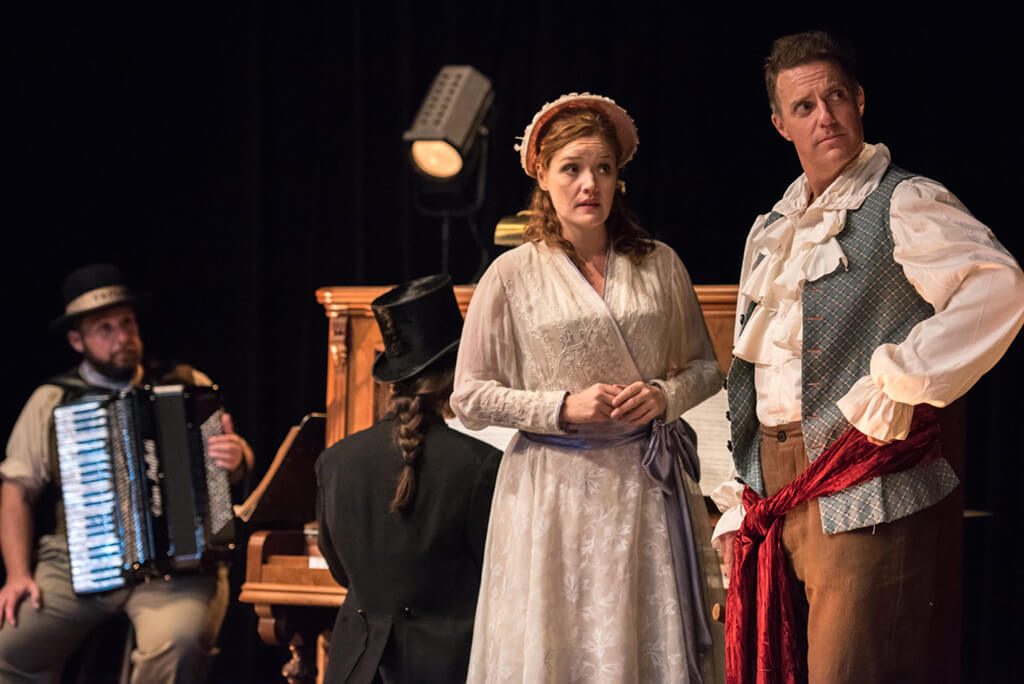
Ever since I saw Sleep No More, an immersive dance performance held in a disused five-storey hotel in New York, I have wondered how this concept could be done with opera. Tapestry Opera’s newly composed work Bandits in the Valley performed on weekend afternoons from September 2 to 30 offers such a promising answer here in Toronto. Set in our very own Don Valley in the year 1880, Julie Tepperman’s text tells the story of a travelling Gilbert & Sullivan operetta troupe visiting the now-historic Todmorden paper mill. The audience is invited to get up close and personal with the cast as they sing classics from Pirates of Penzance that are incorporated into a newly composed score by Benton Roark. Reveling in an intimacy between the audience and singers that is impossible in the opera house, the singers show off their formidable operatic voices up close, demonstrating what opera is all about.
Queering Old Plot Formulas
After the first scene outdoors, the audience is split into two groups and led through two separate storylines that merge together at the end. Although the drama occurs in a beautifully preserved historic site, the challenges faced by these characters are anything but typical of the 19th-century. Like Sleep No More, which modernizes Shakespeare’s Macbeth through Hitchcock’s Rebecca, Tepperman reinterprets history by teasing out current social issues within the framework of a typical W.S. Gilbert operetta plot: a love triangle divided by classes, a mistaken identity, and a ridiculous concluding reveal that leaves everyone happy.
The love story involves two men and Herni, a lesbian character performed by the multitalented Sara Schabas who aptly sings and plays piano as well as the recorder. Like the two men, she vies for the heart of Lily Pollard, the stereotypical heroine sung beautifully by soprano Jennifer Taverner. Henri sings a heartfelt aria while playing the piano, blatantly revealing to the audience her feelings for Lily. She then breaks the fourth wall and asks the audience whether she should confess her feelings despite the taboo of homosexuality that exists in her time. Of course, with our modern sensibilities we say yes –– yet, in asking the audience to decide her fate (which happens only once in the opera) Tepperman draws the audience to empathize with this character’s turmoil. Although Lily does not return Henri’s feelings, this does not detract from Tapestry’s bold attempt to expand the lack of queer representation in opera.

Taking the best of Operetta and bringing it into the 21st century
Given that the characters move briskly through several rooms throughout the opera, Roark opted for a dynamic score using as little as an accordion to two spoons. Combining his own contemporary musical style with that of famous operetta composer Arthur Sullivan, Roark weaves Sullivan’s timeless favourites in a fabric of his own music to evoke a 19th-century that is more palatable to a 21st-century audience. Like Sullivan, who was a master of taking erudite opera and infusing it with popular tunes from his time, so too does Roark make opera accessible. For example, Jacques Arsenault who plays Freddy, sings of his friendship with Jeremiah, the hero after Lily’s hand in marriage, while playing the accordion –– again, with unmistakable queer undertones. Aresneault showcased his powerful tenor voice, adding a haunting resonance throughout the historic house’s stairway.

A New Operatic Experience
In the final scene, the troupe performs an original abridged version of Pirates, returning to the distance created by the stage and re-establishing the divide between audience and performer. Yet even here this distance is quickly dissolved as the audience sings along to a rewritten text of “I Am the Very Model of a Modern Major-General,” during the big finale. At the end of the opera, Lily sums up the immersive experience, bursting into a marvellously comedic and impressive cadenza and saying “What? I didn’t get to finish my aria.” Indeed, this is not your run-of-the-mill operatic experience. Rather, it is a new immersive experience that dissolves how we expect to watch opera, and one which I hope to see more of in the future.
#LUDWIGVAN
Want more updates on Toronto-centric classical music news and reviews before anyone else finds out? Follow us on Facebook or Twitter for all the latest.



